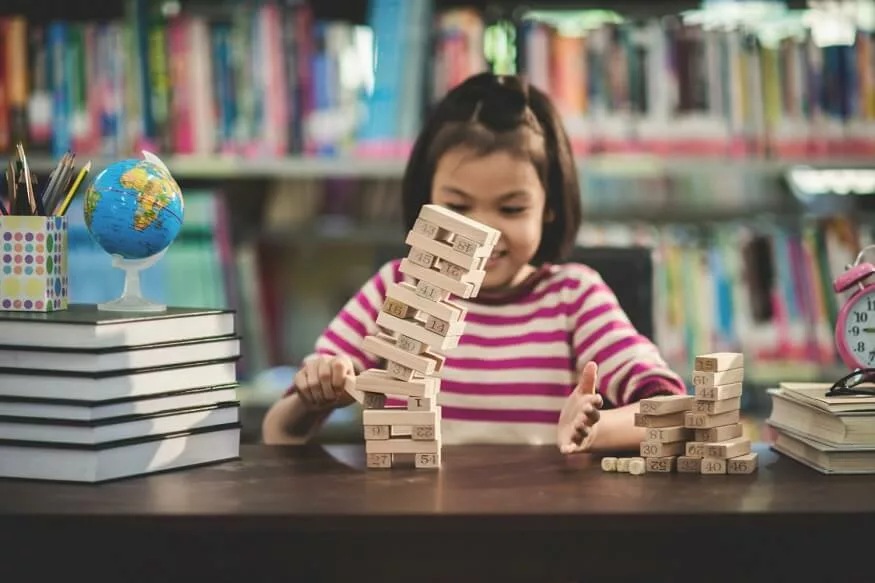In the perennial debate on the most effective methods of childhood education and development, there is one enduring adage that continues to resonate through the generations: ‘Parents know best’. This truism, as old as parenting itself, suggests that the primary caregivers hold the keys to unlocking their children’s potential. It is through this lens we explore the symbiotic relationship between play and learning, two facets of childhood often viewed as separate entities, yet intrinsically linked in fostering holistic development.
The Foundation of Play in Learning
- Intrinsic Motivation: Children are born with an innate curiosity, a natural desire to understand the world around them. Play is the vessel through which this curiosity is quenched, allowing them to explore, experiment, and discover on their terms, powered by intrinsic motivation rather than external rewards.
- Safe Experimentation: The realms of play provide a safe environment for children to take risks and face failures without serious consequences. This trial and error process is fundamental in teaching resilience and adaptability, skills critical in the real world.
- Socialisation: Through play, children learn to interact with others, develop empathy, and navigate social norms. They start understanding group dynamics, the concept of sharing, and the balance between leading and following.
- Cognitive Development: Play often involves problem-solving, whether it’s figuring out how to build a stable block tower or how to win a board game. These playful challenges enhance cognitive abilities such as logical reasoning and creative thinking.
Also Read: The Importance of Play-based Learning in Kindergarten
How Parents Can Harness Play for Learning
Parents, armed with the wisdom of experience and a unique understanding of their child’s needs and abilities, can create enriching play experiences that double as learning opportunities.
1. Choosing the Right Toys
Educational Toys: Opt for toys that are designed with a learning outcome in mind, such as puzzles that promote critical thinking or construction sets that improve spatial awareness.
- Open-Ended Toys: Toys that can be used in multiple ways, like blocks or modelling clay, encourage creativity and innovation, allowing children to invent their own games and stories.
2. Engaging in Active Play
- Physical Activities: Encourage physical play such as sports, dancing, or even playground activities. These not only improve motor skills but also teach lessons about perseverance and healthy competition.
- Interactive Games: Board games and card games can foster family bonding and teach strategic thinking and mathematical skills in a fun setting.
3. Incorporating Learning into Daily Routines
- Practical Life Skills: Involve children in everyday tasks like cooking or gardening, which imparts practical skills and scientific concepts like measuring and understanding plant biology.
- Storytelling: Use storytelling to broaden vocabulary and enhance linguistic abilities. Allow children to tell their stories to stimulate imagination and communication skills.
4. Using Technology Wisely
- Educational Apps: In an age where technology is omnipresent, carefully selected apps and digital games can provide interactive and personalised learning experiences in subjects such as mathematics and language.
- Limit Screen Time: Balance is key. While digital play can be educational, it is essential to limit screen time to ensure that children also engage in physical play and face-to-face interactions.
5. Creating a Playful Environment
- Play Space: Designate a space in the home where play is encouraged, and resources are available. A well-organised play area invites children to explore and learn independently.
- Accessibility: Ensure that toys and materials are within easy reach for children, so they can choose their activities, fostering independence and decision-making skills.
Also Read: Learning Through Play: Theory, Activities and Examples
The Role of Parents in Play
While it is crucial for children to have time for unstructured play, parents play a vital role in guiding and enriching the play experience.
1. Being Present
- Observation: By observing their child’s play, parents can learn about their interests and developmental stage, tailoring support accordingly.
- Participation: Engaging in play with their child can strengthen the parent-child bond and provide moments to gently steer the play towards learning opportunities.
2. Facilitating Rather Than Directing
- Guidance: Offer suggestions and introduce new ideas into play without taking over. This allows the child to maintain a sense of ownership over their play.
- Questioning: Pose open-ended questions during play to encourage children to think critically and articulate their thought process.
3. Encouraging Exploration
- Variety: Introduce children to a range of activities and experiences to broaden their horizons and stimulate different types of learning.
- Problem Solving: Encourage children to come up with solutions to problems during play, whether it’s figuring out how to balance blocks or resolving disputes with playmates.
The Impact of Play on Future Success
The skills garnered through play have far-reaching implications, extending well beyond childhood.
1. Academic Excellence
- Foundation Learning: Many educational concepts can be introduced through play, providing a solid foundation for formal schooling.
- Learning to Learn: Play teaches children how to learn, instilling a love for learning that can translate into academic success.
2. Career Preparedness
- Soft Skills: Collaborative play helps develop ‘soft skills’ like teamwork, communication, and emotional intelligence, which are highly valued in the workplace.
- Innovation: The creativity fostered in play can lead to innovative thinking, a trait that is indispensable in many careers.
3. Personal Development
- Confidence: Success in play activities can boost self-esteem and confidence, contributing to a positive self-image.
- Adaptability: The varied scenarios encountered in play equip children with the ability to adapt to different situations and challenges in life.
Also Read: Which Are The Preschool Teaching Methods and Techniques Used Worldwide
The Balance Between Structured and Unstructured Play
The best learning outcomes often emerge from a balance of structured play, led by parents or educators with specific learning objectives, and unstructured play, where children are free to explore without explicit goals.
1. Structured Play
- Skill Building: Structured play can be tailored to develop specific skills, whether they’re academic, social, or physical.
- Measurable Outcomes: It’s easier to track progress and outcomes when the play is structured with clear objectives.
2. Unstructured Play
- Creativity and Imagination: Unstructured play gives children the freedom to use their imagination, leading to creative and divergent thinking.
- Autonomy: This form of play promotes independence, as children make their own decisions and rules.
The intersection of play and learning is where children’s development is maximised. It is the duty and privilege of parents to facilitate this intersection, crafting experiences that are not only joyful but also educational. EuroSchool ensures that our students play and learn at the same time.











